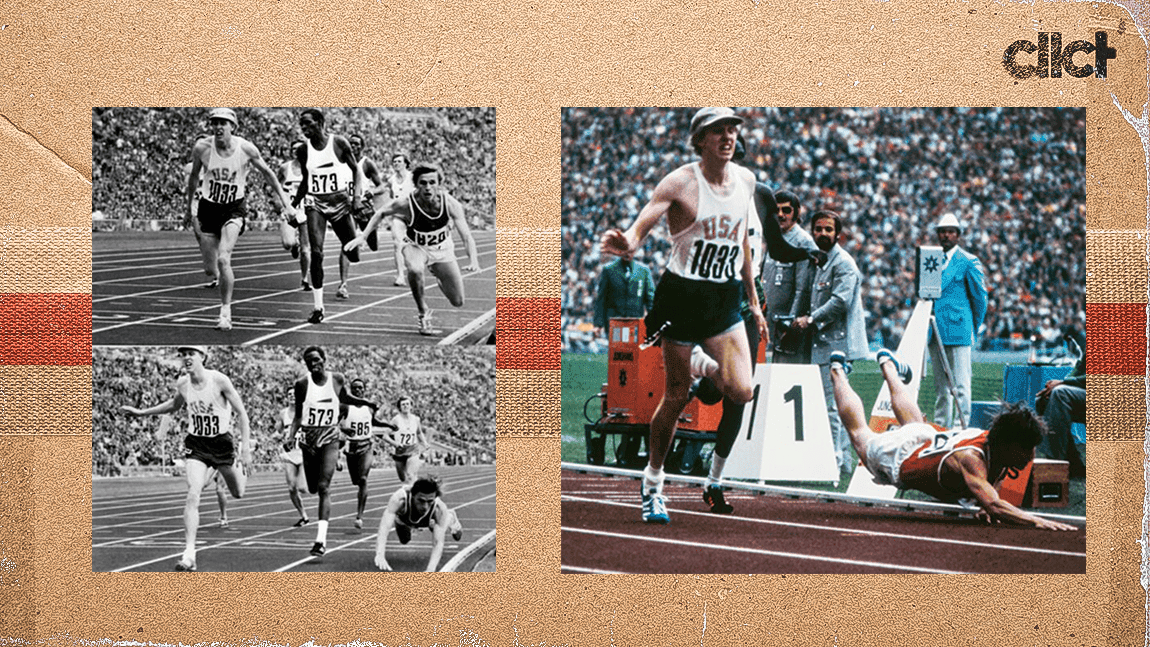There are no movies about Dave Wottle, and the only book about him was published more than 51 years ago.
The man he beat all five times he raced him in the mile? Steve Prefontaine? Well, Pre has had at least six books written about him, and two movies have been made.
Yet Wottle's story is so incredible.
Wottle not only won the gold medal in the Olympics, his victory came in a race that produced, without question, the greatest comeback in American track and field history. And while the race — the Olympic final of the 800 meters at the 1972 Summer Games in Munich — has been watched millions of times on YouTube and on social media, Wottle is still very much forgotten.
With another Summer Olympics on the horizon, Wottle has decided to auction off many of his race-worn items, including the very shoes he wore in the 800 final, which were custom-made for him by adidas. The hat he wore when he beat Prefontaine in the mile at Oregon's Hayward Field is also up for bid at Goldin, with the auction closing Aug. 3.
"I have been keeping all these things in a bin for 50 years," Wottle told cllct. "I'm not engaged with it anyway. I figured I might as well sell it for my family."
The items, aside from the hat, which include race uniforms and warm-up gear, are in pristine condition given their age. Most items, including letters signed by Olympic coach and Nike co-founder Bill Bowerman, start at $200 minimum bids, while the Olympic gold-medal shoes begin at $10,000.
"I had it all tucked away in air conditioning for so long, except for that hat, which I kept out on my bookshelf," said Wottle, who is not selling his gold medal or the hat he wore in the Olympics (which is different than the one he wore in the famed Prefontaine race).
Wottle qualified for the 1972 Olympics in the 800 and the 1500 meters, but was never the favorite.

Newly married six days after the trials, he brought his wife with him to training in Norway and then to the Olympics in Germany, something that bothered Bowerman, who was convinced the timing of the marriage would ruin Wottle's chance at a medal. Eager to prove Bowerman wrong, Wottle went out one day without warming up and hurt himself, which led him to taper his training ahead of the Olympics.
After failing to qualify for the finals of the 1,500, his chances rested on the 800 where, in the final, he would have to beat Yevgeni Arzhanov, who had not lost a championship race at that distance in three years.
If Wottle had a trademark, besides a hell of final kick, it was he was never distracted by his time.
"I never paid attention to the clock, all I wanted to do was win," Wottle said.
In the final — which is two laps around the outdoor track — Wottle fell so far back that the color commentator, running great Marty Liquori, wondered if Wottle was "seriously injured."
And although Wottle's gold-medal finish, where he weaves through every runner to win by a split-second photo finish, is a lesson in persistence, he says after he fell behind by almost 10 meters, he thought it was over.

"Oh, no, I was embarrassed where I was on the track at that point," he said.
As the field slowed down from a fast first lap, Wottle got back into the race and in the final stretch surpassed everyone, including a diving Arzhanov.
Today, Wottle is more recognized as "the runner with the hat," instead of his name.
"I was injured in the 1971, and I started wearing a hat from a golf tournament where I was," Wottle said. From there on in, Wottle wore a hat he wore, including that exact hat for the final in Munich.
In a story rarely told, Wottle said he almost didn't make it onto the track for the 800-meter final.
"A judge stopped me and told me I had seven spikes on the bottom of my shoes and that I could only legally have six," Wottle said. "I didn't have a wrench to take one off. (Great Britain runner) Andy Carter lent me his."
After Wottle won gold in Munich, he finished out the following year at Bowling Green.
In June 1973, he famously raced Prefontaine in Oregon.
"Steve called me up and said, 'Before we go out to race in Scandanavia, we're going to put on a race in Eugene and try to beat the world record,'" Wottle recalled. At the time, the American record was Jim Ryun's 3:51.1. Wottle ran a 3:53.3, beating Pre by more than a second in front of a shocked crowd at Hayward Field.
After the race, Wottle was signing autographs outside the stadium when a young teenager swiped that hat off his head.
"I guess he had the foresight that this was a good collectible," Wottle said. "I couldn't really run at the time. I had just run the third-fastest mile ever, and I was in oxygen deficit. Luckily, the kid wasn't smart and ran into a soccer field with only one way in and one way out and we caught him."
Fifty one years later, that hat is up for bids.
Darren Rovell is the founder of cllct.com and one of the country's leading reporters on the collectibles market. He previously worked for ESPN, CNBC and The Action Network.

